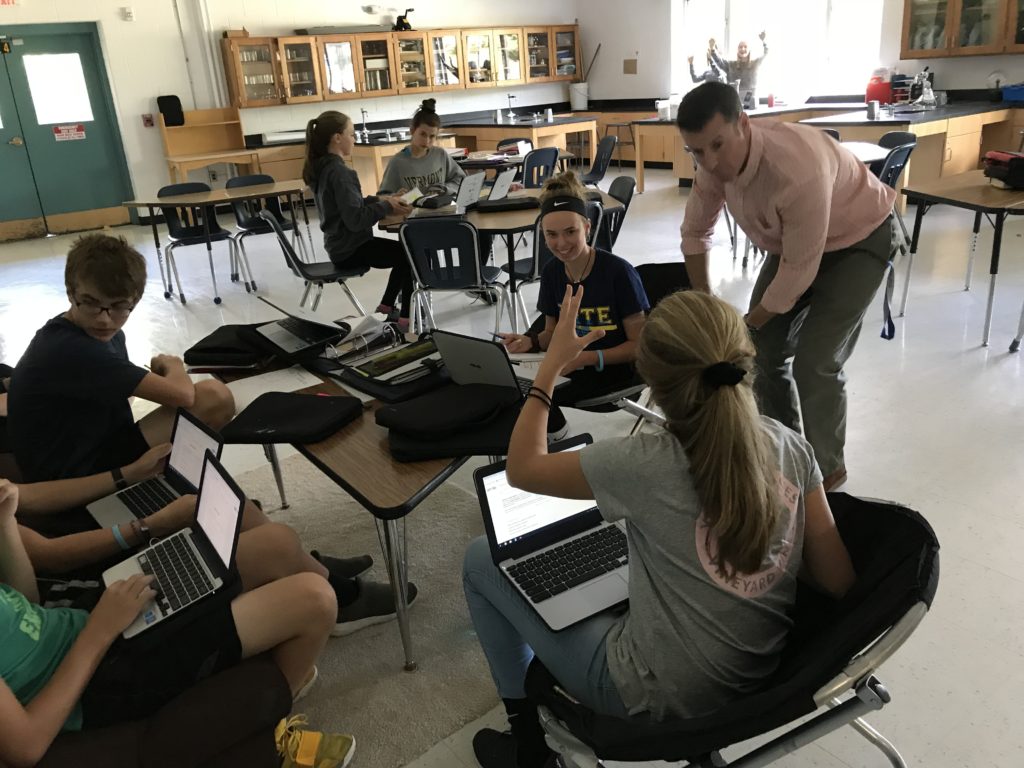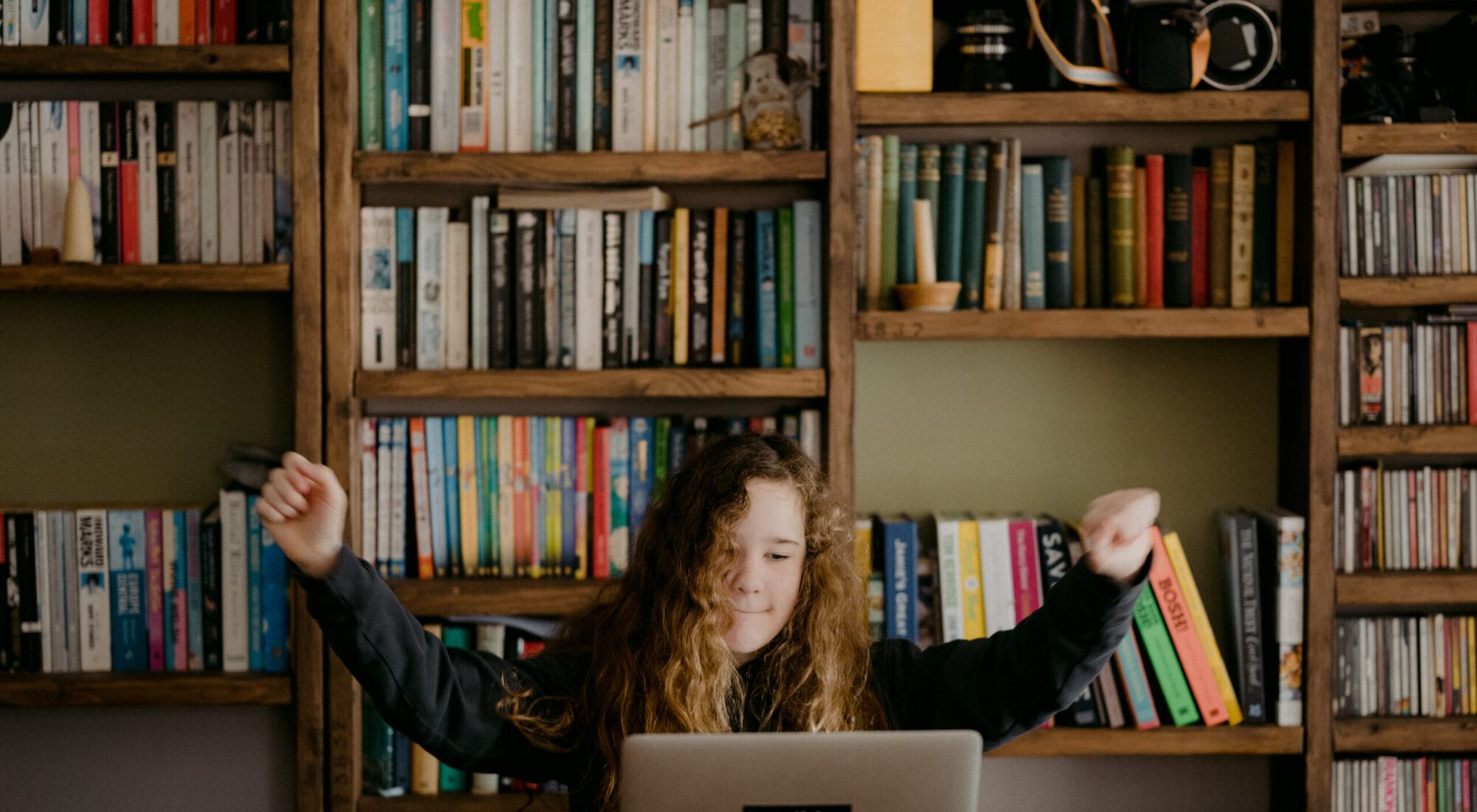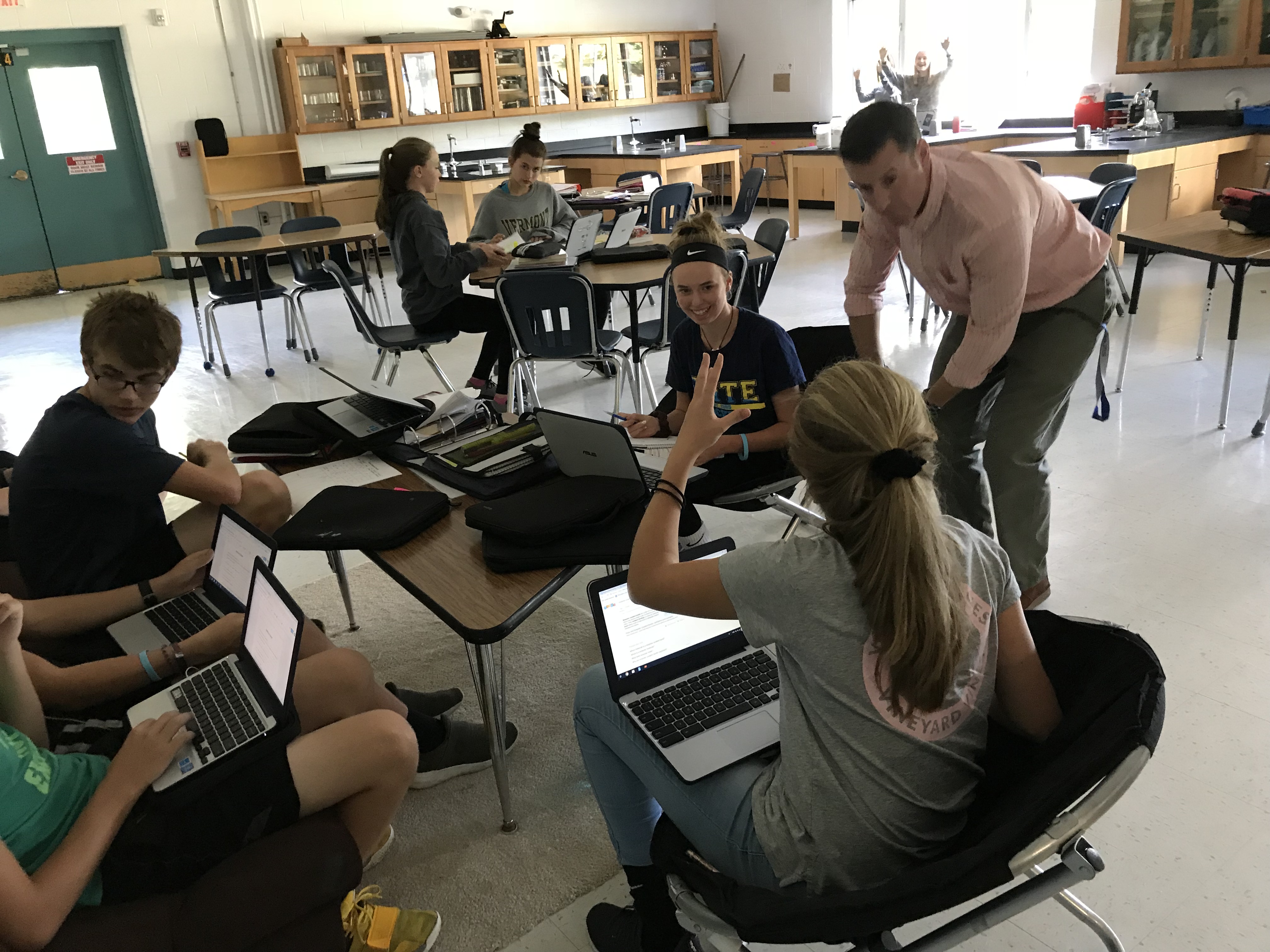Adding playlists into the mix
We often hear about the need to move from the sage on the stage to the guide on the side in student-centered classrooms, so much so that if feels cliche. But how does one go about making that shift in a proficiency-based and personalized learning environment?
Noah Hurlburt, a science teacher at Rutland Town School, describes what it looks like in his self-paced blended science class as “whack-a-mole controlled chaos”. Nick Allen, a music teacher at Lamoille Union Middle School, describes the shift to blended learning in his guitar class as a move from the hardest class he used to teach to the easiest and most effective in helping all students meet proficiencies.
These two Vermont educators see themselves as facilitators of learning. Why? They both deliver curriculum and coordinate instruction through blended learning plus the use of playlists.
According to iNACOL’s definition of blended learning, “The most important component of the definition is the “element of student control” emphasizing the shifting instructional models to enable increased student-centered learning, giving students increased control over the time, place, path, and/or pace of their learning pathways.”
Students in these classrooms take control over the path and pace of their learning. Their teachers design learning paths which include:
- clearly articulated learning targets,
- readily available instructional activities via digital playlists, and
- built-in benchmarks so students signal when they are ready for an assessment.

#SchoologyNEXT I came here wanting a way to connect performance indicators to standards and you delivered! pic.twitter.com/tZN1RvpyEA
— Nick Allen (@mrallentweets) July 25, 2017
If the teachers are not delivering whole-group instruction, what are they doing?
According to Noah, it’s controlled chaos.
He set up his classroom based on students’ multiple learning needs and learning preferences. “Self-paced doesn’t mean independent learning necessarily. Sometimes it’s an opportunity for students to work in collaborative groups with people that they maybe have not worked with before. It’s a perfect time for me to have one-to-one time or small group time with every single student in my classroom.”

Nick agrees: “I no longer lecture in front of that class. It’s turned into me roaming around the room, identifying if kids need help or just waiting for them to self-identify which is even more robust in my opinion for them cause when they self identify that they need some help and we have the small one-on-one lesson which creates that.”
So what does it look like?
Blended learning in a middle school science classroom:
“I’m catching misconceptions at the source instead of waiting until the final test instead of saying oh gosh half the kids didn’t really do well where did I miss it, what was I not getting…so I design with misconceptions in mind.”
Blended learning in a music classroom:
“The environment in my classroom has changed so much it’s not the kids that can play the guitar or the kids that can’t play the guitar; everybody feels as though they’ve accomplished something…It’s created a level of equity in my class that has been missing in previous years.”
Takeaways: How do we and our learners know they’ve learned a targeted concept or skill?
It’s worth the time! Playlists of digital content do take time to build. These playlists need to include instructional and assessment activities aligned to clearly articulated learning targets. The payoff? In both examples, the teachers’ role shifts to include more one-to-one targeted contact time. Students are empowered to self-identify and self-correct along a learning path. They know the progress they’ve made toward becoming proficient and have multiple ways to grow.
Vermont’s Secretary of Education, Dan French, had this to say about how we approach curriculum development in his welcome back to school post:
“We have been engaged in a curriculum development paradigm that is too slow and too inefficient to meet the needs of our students, and the strain on our system is beginning to show. With the advent of Open Education Resources (OER), we will likely need to become even more nimble in our curriculum development processes.”
French goes on to suggest the system should be such that “student learning aspirations are central to the design as teachers create and “mash-up” OER in the first step of the process.” Students in Hurlburt’s and Allen’s classes reap the benefits of educators who have mastered this first step.
More about the role of the teacher in a blended learning classroom:
Access Noah Hurlburt’s playlists at his classroom website, and his slideshow presentation shared at a state-wide conference. You can follow Nick Allen at @mrallentweets . He is more than willing to share his Schoology course with interested educators. Reach out.
This isn’t the first time we’ve looked at using playlists in a blended learning environment. The potential for personalization is powerful.



I love the idea of using music in the classroom within a blended learning approach. It is amazing how teaching in changing in universitiies. I teach in the UK at university level and its great to be able to be creative with teaching methods these days (when we are allowed to) 🙂
Dr Valeria Lo Iacono
Agreed! Here in Vermont, we have a mandate from our state government to personalize learning and open flexible pathways to learning for all students. It’s led to some wonderful experimentation with different pedagogies to meet learners’ needs.